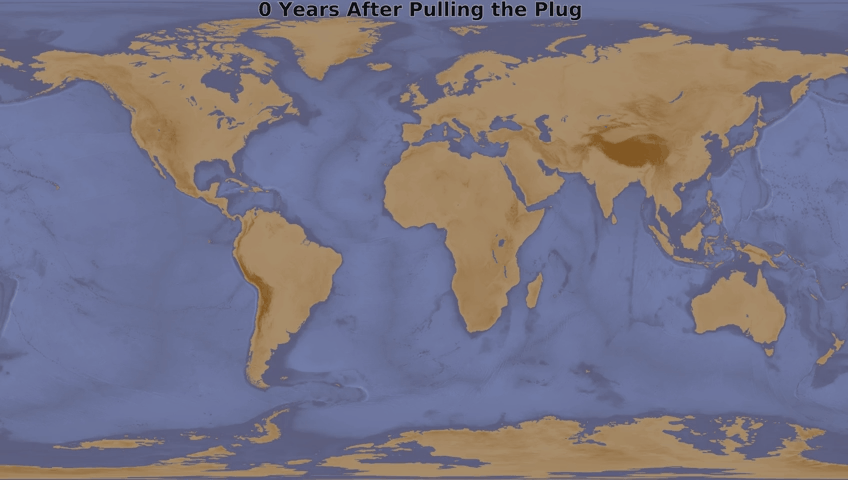Reddit user: Vinnytsia
The Mariana Trench or Marianas Trench is the deepest part of the world's oceans. It is located in the western Pacific Ocean, an average of 200 kilometres to the east of the Mariana Islands, in the Western Pacific East of Philippines. It is a crescent-shaped scar in the Earth's crust, and measures about 2,550 km long and 69 km wide on average. It reaches a maximum-known depth of 10,994 metres at a small slot-shaped valley in its floor known as the Challenger Deep, at its southern end, although some unrepeated measurements place the deepest portion at 11,034 metres. For comparison: if Mount Everest were dropped into the trench at this point, its peak would still be over 1.6 kilometres underwater. In 2009, Marianas Trench was established as a United States National Monument.
At the bottom of the trench the water column above exerts a pressure of 1,086 bars, more than 1,000 times the standard atmospheric pressure at sea level. At this pressure, the density of water is increased by 4.96%, so that 95 litres of water under the pressure of the Challenger Deep would contain the same mass as 100 litres at the surface. The temperature at the top is 1 to 4 °C.
The trench is not the part of the seafloor closest to the center of the Earth. This is because the Earth is not a perfect sphere; its radius is about 25 kilometres less at the poles than at the equator. As a result, parts of the Arctic Ocean seabed are at least 13 kilometres closer to the Earth's center than the Challenger Deep seafloor.
Xenophyophores have been found in the trench by Scripps Institution of Oceanography researchers at a record depth of 10.6 kilometres below the sea surface. On 17 March 2013, researchers reported data that suggested microbial life forms thrive within the trench
The Mariana Trench or Marianas Trench is the deepest part of the world's oceans. It is located in the western Pacific Ocean, an average of 200 kilometres to the east of the Mariana Islands, in the Western Pacific East of Philippines. It is a crescent-shaped scar in the Earth's crust, and measures about 2,550 km long and 69 km wide on average. It reaches a maximum-known depth of 10,994 metres at a small slot-shaped valley in its floor known as the Challenger Deep, at its southern end, although some unrepeated measurements place the deepest portion at 11,034 metres. For comparison: if Mount Everest were dropped into the trench at this point, its peak would still be over 1.6 kilometres underwater. In 2009, Marianas Trench was established as a United States National Monument.
At the bottom of the trench the water column above exerts a pressure of 1,086 bars, more than 1,000 times the standard atmospheric pressure at sea level. At this pressure, the density of water is increased by 4.96%, so that 95 litres of water under the pressure of the Challenger Deep would contain the same mass as 100 litres at the surface. The temperature at the top is 1 to 4 °C.
The trench is not the part of the seafloor closest to the center of the Earth. This is because the Earth is not a perfect sphere; its radius is about 25 kilometres less at the poles than at the equator. As a result, parts of the Arctic Ocean seabed are at least 13 kilometres closer to the Earth's center than the Challenger Deep seafloor.
Xenophyophores have been found in the trench by Scripps Institution of Oceanography researchers at a record depth of 10.6 kilometres below the sea surface. On 17 March 2013, researchers reported data that suggested microbial life forms thrive within the trench

This post may contain affiliate links. As an Amazon Associate, I earn from qualifying purchases.